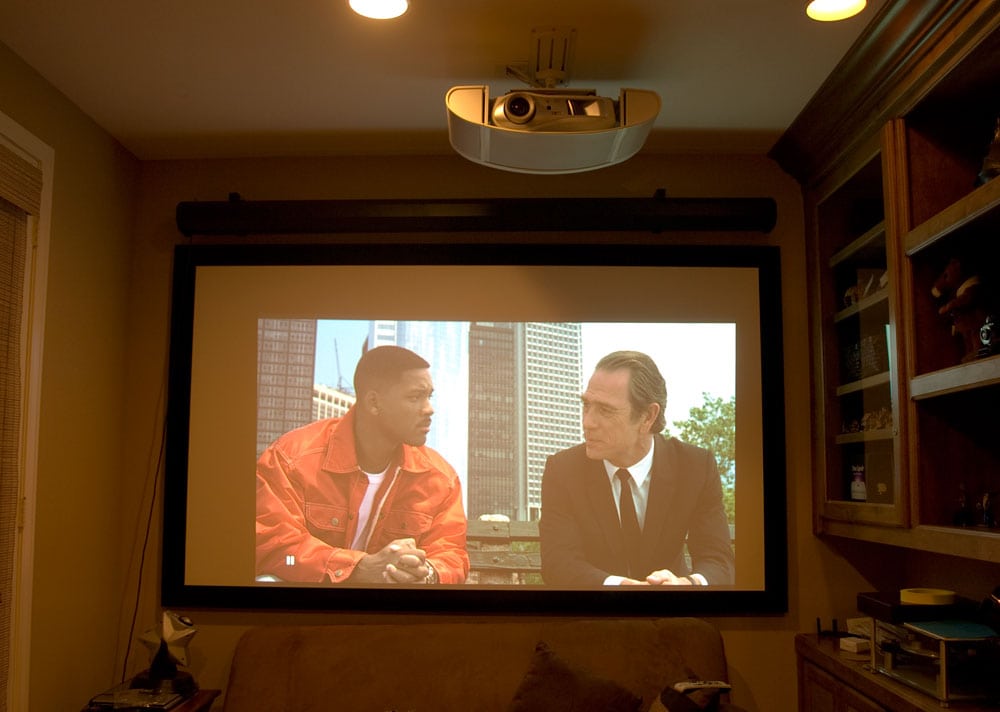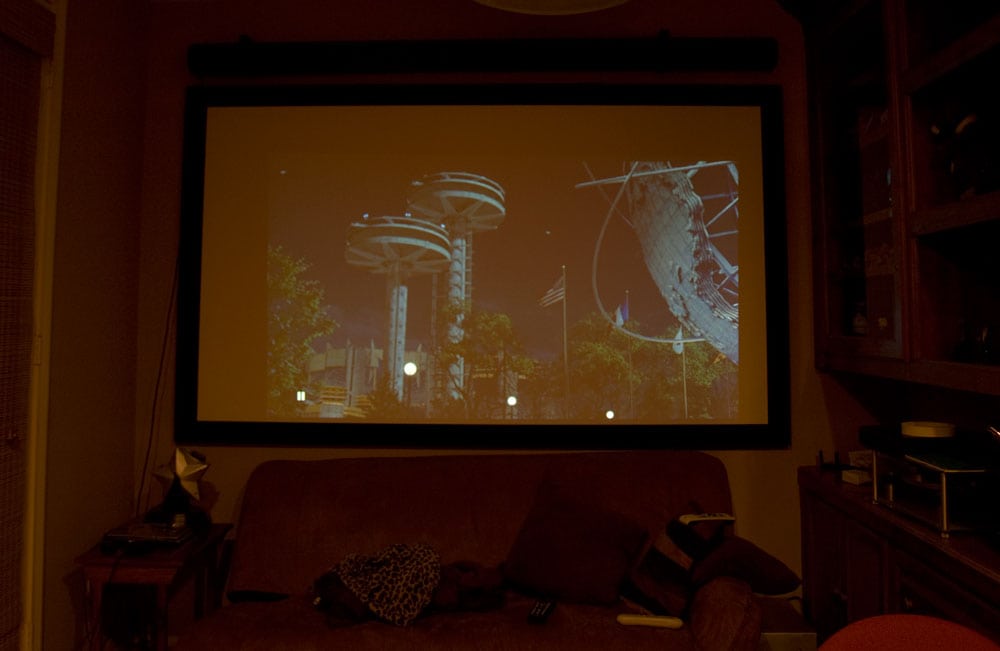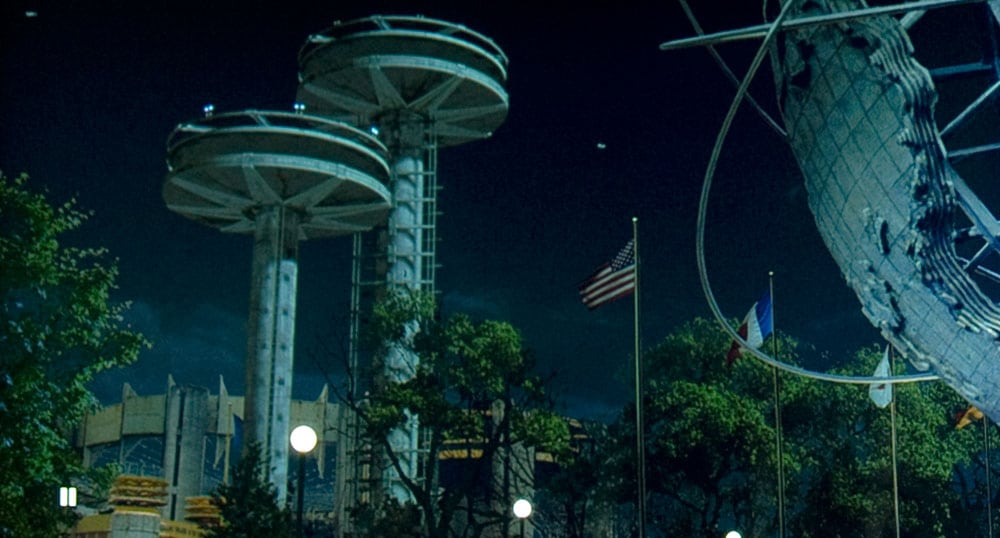Epson MovieMate 60 Brightness
Wow! As I mentioned on the first page, the MovieMate 60 is basically a light canon, compared to not just the all-in-one competition, but even when compared to most under $10,000 home theater projectors.
Epson built the MovieMate 60 to work in family rooms, spare bedrooms, basements, whatever you've got. As such, it's brighter than most, so will do better when you are not fully able to control ambient light.
I'm not sure quite what the story is with Auto mode, neither Mike nor I worked with it a lot, but it's the dimmest, and the color temp is too red, generally.
We consider Theatre to be "best" mode, and while they are similar, I favored Living Room over Dynamic for overall picture quality, considering they are virtually identical in brightness. For some things, though, you may favor Dynamic. I didn't work with game, it's a bit more contrasty though, and probably nice for gaming, if it's not too dark in the darker regions, which is often a problem for projectors. I did pop in Carbon Canyon (racing game) on my PS3, but just briefly. The dark areas on the night run weren't bad. However best played in a fairly dark room even with all those lumens, if you want to see details in the dark areas.
| Auto |
678 @ 5440K |
| Dynamic |
1671 @ 6793K |
| Living Room |
1696 @ 6837K |
| Game |
1609 @ 6811K |
| Theatre |
1235 @ 6577K |
|
Let's see what that translates to in the real world. I've got photos here, showing my testing room, back recessed lights on, front and rear on, and all lights off, for the same image. Here's what the back of the room looks like. It's actually pretty bright, but with the medium brown walls, and wood cabinettes, the front of the room isn't overly bright.
Here is the same frame, from Men In Black. In the first image, only the rear lighting shown above, is on. In the second one, the MovieMate does the best it can with the front lights on too. That's a pair of 65 watt floods running full out, and too close to the screen. (Actually, the image did look better than it does in this photo.)
Of course dark scenes are more challenging. Below, find the same image twice, once with the full lighting, and below it, no lights (don't forget to notice how good the night scene looks with the lights off):
The projector has both High (lamp) power mode, and Low (lamp) power mode. In Theatre mode, we measured High power (lamp) at 1235 lumens, while in Economy mode, lumens dropped to 792, a drop of a whopping 36%. For perspective though, of all the home theater projectors we've reviewed in the last year, only two or three have as many lumens in their "best" mode, with lamp on full power, as this all-in-one musters, in low power, in its "best" mode. Like I said, a veritable light cannon.
Using the digital zoom inherently dims the projector's output. That's because you are simply producing a smaller image, and if then enlarge that image (move the projector further back to fill the same area as without using digital zoom), the image will definitely not be as bright. With full digital zoom, you'll not only lose true resolution, but about half of all lumens.
See the Calibration page for more information, and the settings we came up with for the best performance after calibrating the MovieMate.
Bottom line: This Epson all-in one is intended for non-dedicated theater rooms, outdoor nighttime parties, and your favorite football game on your largest white wall. and as such, the expectation is that there will definitely may be more than a little ambient light. The Epson MovieMate 60 is about as bright as it gets. The dedicated Panasonic PT-AX200U (a 720p projector), the Optoma HD71 (also 720p) are similar in overall brightness. In the world of 1080p projectors, you have to go all the way to the BenQ W6000 at about $2500 to find a projector that is roughly the match for the MovieMate 60 in both "best", and "brightest" mode lumen output.






